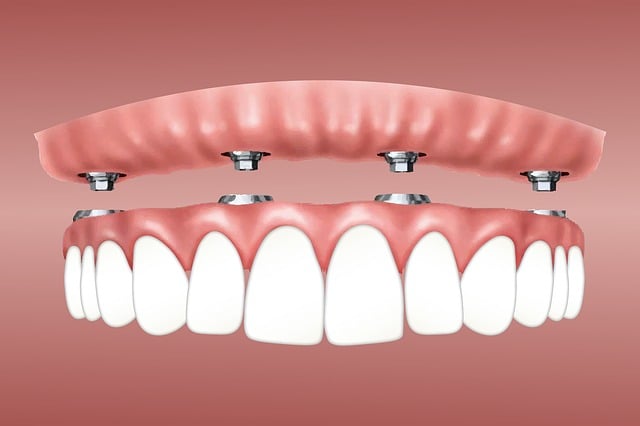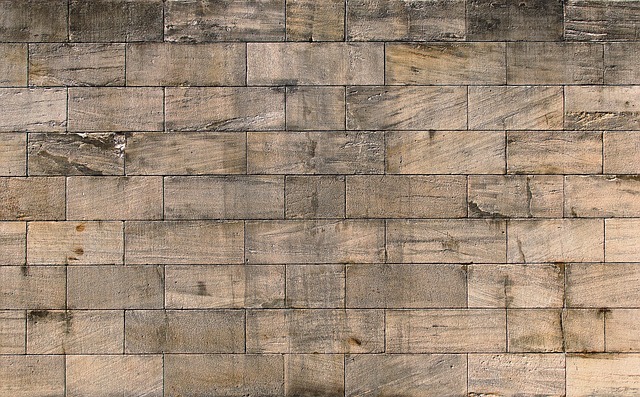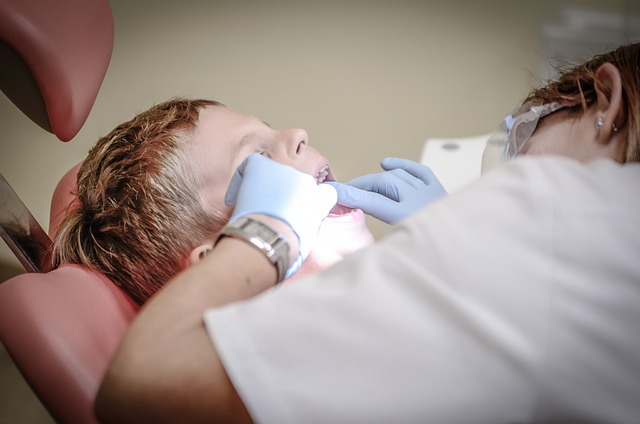The Art of Gap Closure: How Retainers Can Help
Closing the gap between teeth can be a transformative experience, both aesthetically and functionally. While orthodontic treatments like braces are widely known for their ability to straighten misaligned teeth, what happens after the braces come off? Enter the unsung heroes of orthodontics: retainers. Often overlooked, these unassuming appliances play a crucial role in maintaining the hard-won results of braces and ensuring a lasting, confident smile. In this article, we delve into the art of gap closure and explore how retainers can be the key to preserving your newfound dental harmony. So, fasten your seatbelts and get ready to unlock the secrets of gap closure with the help of retainers.
1. Understanding the Importance of Gap Closure in Orthodontics
Gap closure is a crucial aspect of orthodontics, as it plays a significant role in achieving a well-aligned and functional smile. By understanding the importance of gap closure, both orthodontists and patients can appreciate the transformative power it holds. Here are a few key points to consider:
- Improved aesthetics: Closing gaps between teeth can greatly enhance the overall appearance of a smile. It eliminates any unsightly spaces, creating a harmonious and balanced look.
- Enhanced oral health: Gap closure not only improves the appearance of a smile but also contributes to better oral health. Spaces between teeth can trap food particles and increase the risk of plaque accumulation, leading to various dental issues. Closing these gaps reduces the chances of decay, gum disease, and other related problems.
- Better functionality: Gaps between teeth can affect proper biting and chewing, causing difficulties in eating certain foods. By closing these gaps, orthodontic treatment improves the overall functionality of the teeth, allowing for better oral function and more efficient digestion.
- Boosted confidence: A smile without gaps can significantly boost self-confidence and self-esteem. With a more aligned and attractive smile, individuals often experience a positive impact on their social and professional interactions.
Understanding the significance of gap closure in orthodontics empowers both orthodontists and patients to recognize the potential benefits it can bring. It is essential to consult with a qualified orthodontist who can provide personalized treatment plans to address specific gap closure needs. Through orthodontic techniques such as braces, aligners, or other suitable interventions, achieving a gap-free smile is within reach for individuals of all ages.

2. The Role of Retainers in Achieving a Perfect Smile
Retainers play a crucial role in the journey of achieving a perfect smile. Once orthodontic treatment is complete, retainers are often recommended to maintain the newly aligned teeth and prevent them from shifting back to their original positions. Here’s why retainers are an essential component of any orthodontic treatment:
- Stability: Retainers help stabilize the teeth in their new positions, allowing the surrounding tissues to adapt and hold them in place. This is particularly important during the first few months after braces or aligners are removed, as the teeth are more susceptible to shifting.
- Prevention: By wearing retainers as prescribed by your orthodontist, you can prevent relapse and ensure that your teeth remain straight and aligned. Retainers act as a safeguard against any potential shifting caused by natural growth, grinding, or other external factors.
- Comfort: Modern retainers are designed to be comfortable and discreet. Whether you opt for removable retainers or fixed ones, they are often custom-made to fit your mouth perfectly, allowing for ease of wear and minimal interference with daily activities.
Remember, consistency is key when it comes to wearing retainers. Your orthodontist will provide specific instructions on when and for how long you should wear your retainers. It’s important to follow these guidelines diligently to maintain the results of your orthodontic treatment and enjoy a lasting, beautiful smile.

3. Exploring the Artistry of Retainers for Effective Gap Closure
Retainers play a crucial role in achieving effective gap closure in orthodontic treatment. Understanding the artistry behind these devices allows orthodontists to optimize treatment outcomes and ensure long-term stability. When it comes to selecting the right retainer, several factors come into play, including the type of malocclusion, patient compliance, and individual preferences.
There are two main types of retainers commonly used: removable and fixed retainers. Removable retainers, such as Hawley retainers, are made of a combination of acrylic and metal wires. They are custom-made to fit the patient’s teeth and can be easily removed for eating and cleaning. On the other hand, fixed retainers, also known as bonded retainers, are a thin wire that is bonded to the lingual side of the teeth. These retainers are permanent and provide continuous support to prevent any shifting or relapse.
When it comes to gap closure, retainers can be customized to address specific challenges. For example, if a patient has a diastema (a gap between their front teeth), a retainer with a built-in spring may be used to apply gentle pressure and close the gap over time. Additionally, retainers can be designed with active components, such as springs or screws, to guide the movement of teeth and ensure optimal alignment. The choice between removable and fixed retainers, as well as the design elements incorporated, ultimately depends on the orthodontist’s clinical judgment and the unique needs of each patient. With their expertise and understanding of the artistry behind retainers, orthodontists can confidently provide effective gap closure and long-lasting results.
4. Retainers: The Key to Maintaining Orthodontic Results
After months or even years of orthodontic treatment, it is crucial to maintain the results you have worked so hard to achieve. This is where retainers play a vital role. Retainers are custom-made devices that help keep your teeth in their new and improved positions. They are typically made of clear plastic or metal wires and are designed to be worn regularly, especially at night, to prevent any shifting or relapse.
Here are a few key reasons why retainers are essential in maintaining orthodontic results:
- Stability: Retainers help stabilize your teeth by preventing them from reverting to their previous positions. They ensure that the teeth stay aligned and do not shift back to their original misalignment.
- Preventing relapse: After orthodontic treatment, your teeth may have a tendency to move back to their original positions. Wearing retainers as prescribed by your orthodontist minimizes the chances of relapse and helps maintain the desired outcome.
- Bite correction: Retainers not only maintain the alignment of your teeth but also ensure that your bite remains stable. They help in correcting any bite issues and ensure that your upper and lower teeth fit together properly.
- Long-term investment: Wearing retainers consistently is a long-term investment in your orthodontic treatment. It helps protect the investment you made in your smile and ensures that you continue to enjoy the benefits of your orthodontic journey for years to come.
Remember, each person’s orthodontic treatment is unique, and the type of retainer and duration of wear may vary. It is crucial to follow your orthodontist’s instructions regarding the use of retainers to maintain your beautiful smile and the overall success of your orthodontic treatment.

5. How Retainers Contribute to the Lasting Success of Orthodontic Treatment
Retainers play a crucial role in ensuring the long-term success of orthodontic treatment. Once the braces or aligners have done their job of straightening teeth, retainers step in to maintain the newly achieved alignment. Here’s how retainers contribute to lasting success:
1. Preventing relapse: After the braces are removed, teeth have a tendency to shift back to their original positions. Retainers help counteract this natural tendency by keeping the teeth in their new, aligned positions. By wearing retainers as prescribed by the orthodontist, patients can significantly reduce the risk of relapse and maintain their beautiful smiles for years to come.
2. Stabilizing bone and tissues: Orthodontic treatment not only involves moving teeth but also reshaping the bone and tissues supporting them. Retainers provide the necessary stabilization for these structures to adapt and settle into their new positions. This process is essential to ensure a stable and functional bite, as well as to maintain the overall oral health. By wearing retainers consistently, patients allow their bone and tissues to strengthen and solidify around the newly aligned teeth, contributing to the lasting success of their orthodontic treatment.
In conclusion, retainers are a vital component of orthodontic treatment that contribute significantly to its long-term success. By preventing relapse and stabilizing the bone and tissues, retainers help maintain the newly achieved alignment and ensure a stable and functional bite. It is important for patients to follow their orthodontist’s instructions and wear retainers as prescribed to enjoy the lasting benefits of their orthodontic journey.
6. Unlocking the Secrets of Gap Closure with Retainers
Retainers play a crucial role in the final stages of orthodontic treatment, aiding in the closure of gaps and ensuring long-term stability of teeth alignment. Here are some key insights into how retainers work and their secrets in achieving gap closure:
1. Maintaining alignment: Retainers are designed to hold teeth in their corrected positions after the completion of orthodontic treatment. By providing a gentle force against shifting, retainers prevent gaps from reappearing and support the surrounding tissues to adapt to the new alignment. This helps in closing any residual gaps and achieving a harmonious smile.
2. Types of retainers: There are mainly two types of retainers: removable and fixed. Removable retainers, such as Hawley retainers or clear aligners, can be taken out for eating, brushing, and flossing. On the other hand, fixed retainers consist of a thin wire bonded to the back of the teeth, ensuring continuous support and preventing any unwanted movement. Your orthodontist will recommend the most suitable type of retainer based on your specific needs.
7. Retainers: The Ultimate Tool for Closing Orthodontic Gaps
Retainers are undoubtedly the ultimate tool for closing orthodontic gaps. These devices play a crucial role in maintaining the results achieved through orthodontic treatment. By wearing a retainer, patients can ensure that their teeth remain in their new, corrected positions, preventing any relapse or shifting. Retainers are custom-made for each individual and are designed to fit comfortably in the mouth, making them easy to wear on a daily basis.
One of the key benefits of using retainers is their ability to close any remaining gaps or spaces between teeth. These gaps can be a result of natural tooth movement or may be intentionally left by the orthodontist for aesthetic reasons. Regardless of the cause, retainers can help close these gaps effectively over time. By applying gentle pressure on the teeth, retainers gradually move them closer together, resulting in a beautifully aligned smile.
- Prevent relapse: Retainers are crucial in preventing any relapse or shifting of teeth after orthodontic treatment. By wearing a retainer as recommended by your orthodontist, you can maintain the results achieved through braces or aligners.
- Customized comfort: Retainers are custom-made to fit your unique dental structure, ensuring maximum comfort while wearing them. They are designed to be worn discreetly, allowing you to go about your day without any discomfort or self-consciousness.
- Closing gaps: Retainers are highly effective in closing orthodontic gaps or spaces between teeth. With regular use, they apply gentle pressure, gradually moving the teeth closer together for a more harmonious smile.
Frequently Asked Questions
Q: What is gap closure in dental terms?
A: In dentistry, gap closure refers to the process of closing spaces or gaps between teeth, usually resulting from tooth loss or misalignment.
Q: How can retainers aid in gap closure?
A: Retainers play a crucial role in gap closure by applying gentle and consistent pressure on the teeth, gradually guiding them into their desired positions over time.
Q: What types of retainers are commonly used for gap closure?
A: Two common types of retainers used for gap closure are removable retainers, which can be taken off for cleaning, and fixed retainers, which are bonded to the teeth using dental cement.
Q: Are retainers effective in closing large gaps between teeth?
A: Retainers are typically more effective in closing smaller gaps or spaces between teeth. Larger gaps may require additional orthodontic treatments such as braces or clear aligners.
Q: Are retainers suitable for all individuals seeking gap closure?
A: Retainers can be an excellent option for individuals with minor gaps or spaces between their teeth. However, it is essential to consult with a dental professional to determine the most suitable treatment plan based on individual needs.
Q: How long does it take for retainers to close gaps between teeth?
A: The duration for gap closure using retainers varies depending on the size of the gap and individual factors. In general, it may take several months to a year to achieve the desired results.
Q: Are retainers uncomfortable to wear?
A: Retainers are designed to be comfortable and should not cause significant discomfort. Initially, there might be a slight adjustment period as the mouth adapts to the presence of the retainer, but this discomfort should subside over time.
Q: Is there a risk of the gap reopening after gap closure with retainers?
A: There is a possibility of the gap reopening if the retainer is not worn as prescribed by the dental professional. Consistent retainer use, as instructed, is crucial in preventing the gap from reappearing.
Q: Can retainers address other dental issues besides gap closure?
A: Retainers primarily focus on gap closure, but they can also be used to maintain the position of teeth following orthodontic treatments such as braces or aligners.
Q: Are there any alternative treatments for gap closure besides retainers?
A: Yes, there are alternative treatments for gap closure, including braces, clear aligners, dental bonding, or porcelain veneers. The most suitable treatment option will depend on the specific needs and preferences of the individual.
Q: Are retainers covered by dental insurance?
A: The coverage of retainers by dental insurance varies depending on the insurance plan. It is advisable to check with your insurance provider to determine the extent of coverage for orthodontic treatments like retainers.
Q: How can one find a qualified dental professional for gap closure with retainers?
A: To find a qualified dental professional, it is recommended to seek referrals from trusted sources such as family, friends, or general dentists. Additionally, online directories and professional associations can provide a list of certified orthodontists experienced in gap closure treatments.
In Retrospect
In conclusion, the art of gap closure is indeed a skill worth mastering, and retainers can serve as valuable tools in achieving this goal. By understanding the purpose and benefits of retainers, we can confidently embark on our journey towards a more aligned smile.
Key Takeaways:
1. Retainers are essential for closing gaps and maintaining orthodontic treatment results.
2. There are different types of retainers, including fixed and removable options.
3. Retainers help prevent teeth from shifting back to their original positions.
4. Consistency is key – wearing your retainer as prescribed by your orthodontist is crucial for success.
5. Regular check-ups with your orthodontist will ensure that your retainer is properly fitted and adjusted.
Remember, the art of gap closure requires patience and dedication, but with the help of retainers, you can achieve the smile you’ve always desired. So, embrace the power of retainers and take the first step towards a confident, gap-free smile.






